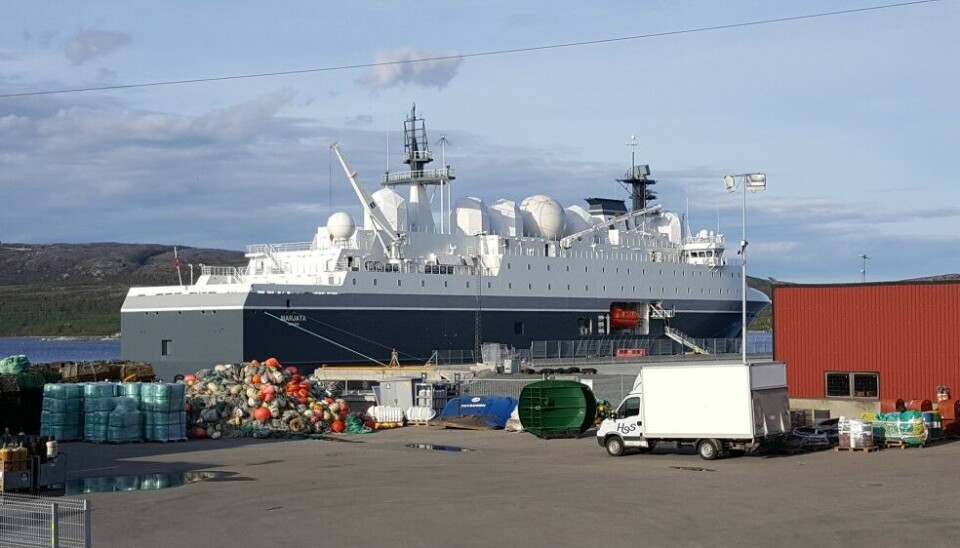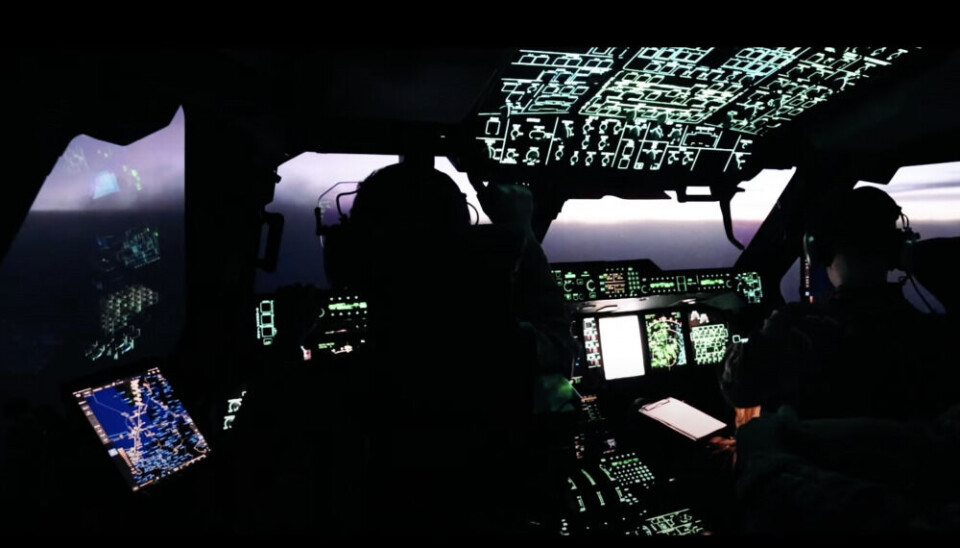
Støre: No plans to lift restrictions on NATO activities near border with Russia
A British Air Force plane was Tuesday flying back-and-forth over the Varanger Fjord a few nautical miles from Norway’s border with Russia. Prime Minister Jonas Gahr Støre, however, says to the Barents Observer that there are no plans to change self-imposed restrictions for NATO flights over the East-Finnmark region.
Set during the Cold War, the regulations were aimed at not provoking the Soviet Union, which based its fleet of nuclear submarines on the coast of the Kola Peninsula from the early 1960s. For Norway, in those days the only NATO member in Europe with a direct land border with the USSR, the guiding policy was to balance between deterrence and reassurance. NATO membership is the pillar of deterrence and limited military and allied operations near the eastern border are the reassurance.
“These are decisions Norway takes as a sovereign country,” PM Jonas Gahr Støre answers when asked by the Barents Observer if his government has any plans to lift self-imposed restrictions for NATO flights near the border with Russia.
“I mean Norway’s policy over time, in the way we act, practice, is predictable, serve us, serve the allies, serve stability and security in the north,” Støre states.
Long-term perspective and predictability are “a very important resource for a country like Norway with our geography,” the Prime Minister says and makes clear:
“…. we have no plans to change the pattern that is recognizable to Norway.”
The Barents Observer has previously reported about both U.S. and Swedish air forces making signals intelligence sorties north in Lapland close to the Kola Peninsula following Finland’s entry to NATO. Such flights by the Swedish Korpen plane took place both on February 7 and 8 this week. Last Tuesday, a U.S. Air Force Rivet Joint made a similar sortie to north of Lake Inari.
Unlike Norway, Finland didn’t bring any self-imposed restrictions to the table when joining the North Atlantic alliance in April last year.
Jonas Gahr Støre says his government is in good dialogue with both Finland and Sweden.
“We know each other well, how we act.”
“Now Finland and Sweden will contribute with their experiences, with their history, they will be allowed to make their decisions,” Støre says to the Barents Observer and adds that the two countries have been eager to learn “how Norway practices its NATO membership.”
“Finland and Norway are two of three countries in NATO that have a border with Russia and Finland has, in its process, been concerned with how Norway has managed to both be a border country, have neighboring relations, and be a NATO member,” Støre says.
[Editor’s note: This isn’t correct. There are six NATO countries with land borders to Russia; Norway, Finland, Estonia, Latvia, Lithuania, and Poland].
Last year, former Chief of Norway’s Joint Headquarters, Lieutenant General Rune Jakobsen, said in a debate at Arendalsuka that it is “high time to scrap self-imposed restrictions.”
“High time to scrap”
The retired Commander argued a new Russia-strategy is needed. “We need to send stronger signals to Russia, to avoid being exposed to hybrid operations in an area where we are very vulnerable.”

The Northern Fleet’s ballistic missile submarines based on the Barents Sea coast form a key leg in Russia’s nuclear deterrence. Also, the new Yasen-class multi-purpose subs with long-range cruise missiles that can target NATO’s North Atlantic supply chain have homeport a short 60 km east of the border with Norway.
Of special interest for NATO is Moscow’s test- and developing program for new nuclear-powered weapons, the Burevestnik and Poseidon, taking place in Arctic waters east of Norway.
In recent weeks, Tu-95 bombers from Olenya Air Base on the Kola Peninsula have taken a central role in Russia’s terror bombing of cities in Ukraine, heightening the strategic role of the northern region in the ongoing war.
“Eyes and ears”
“Norway will continue to be what I call NATO’s eyes and ears in the north,” Jonas Gahr Støre says to the Barents Observer.
There are several military intelligence locations in Norway’s border region to the Murmansk region, including the Vardø Radar system, and installations both in Vadsø and outside Kirkenes.
At sea, the Marjata and Eger intelligence ships gather information about Russian naval operations in the Barents Sea and northern parts of the Norwegian Sea.

Background from Soviet days
Defense analyst with the Norwegian Institute of International Affairs (NUPI), Per Erik Solli, explains in an OpEd for the Barents Observer how the restrictions have changed over time during and after the Cold War.
“In 1995, the Norwegian system had a major revision to easier facilitate allied training and exercises in Norway. The Ministry of Defense moved away from calling the regime ‘self-imposed restrictions’, and instead created more ‘general guidelines‘ for foreign military activity in Norway. For example, allied land forces were allowed to participate in military exercises in Finnmark, and the restrictions in Finnmark for foreign military aircraft became far less restrictive,” Solli writes.
He elaborates on recent developments:
“The provisions for foreign military aviation that were in place in 2017 are publicly available and describe a revised regime that allows foreign military aircraft to fly east of the 24th meridian. It states that all flights beyond 24° east should be coordinated by the leadership of the Air Force in accordance with the Ministry of Defense’s ‘Guidelines for foreign military activity in Norway.’ The new provisions allow foreign military transport and passenger aircraft as well as helicopters, under certain conditions, to fly throughout almost all of Finnmark, Per Erik Solli explains.
However, as he notes: “A new buffer zone has been established at 28° east, serving as an absolute limit for flights with foreign fighter aircraft.”
RAF over the Varanger fjord
Tuesday evening, a very special sortie took place east of what until now was considered that limit.

The British aircraft had taken off from Bardufoss airport in Troms and flew to east Finnmark over Tana at about 29° East. The large four-propelled transport plane continued further east over land and in the skies above the Varanger fjord. It flew circles and back-and-forth near both Vadsø and Vardø, two Norwegian towns at 29°E and 31°E.
No landing took place, and the flight pattern seemed deliberately to be a military signalling to neighbouring Russia.
NRK Troms and Finnmark was the first to report about the flight.
Spokesperson Reidar Falsnes with the Joint Headquarters links the RAF flight this Tuesday to the need for allies to train in Norway ahead of exercise Nordic Response.
“Partner nations, in this case the UK Air Force, want to train and practice in our areas, and this is something Norway sees as positive,” Falsnes explains.
“That our partners in and outside NATO framework are familiar with our areas in terms of geography, weather conditions and so, is an advantage we want to maintain,” the spokesperson elaborates.
Nordic Response kicks off in March and will be the northernmost and largest NATO exercise inside the Arctic Circle since the days of the Cold War. New of the year is training of reinforcement of Finland and Sweden via roads and railways from the Norwegian coast.
“In connection with exercise Nordic Response, it is naturally increased training activity in all domains. This is both to prepare but also to ensure that safety is taken care of in the best possible way,” Reidar Falsnes says.
“This includes several checks on procedures and different types of flight patterns in different areas.”
















